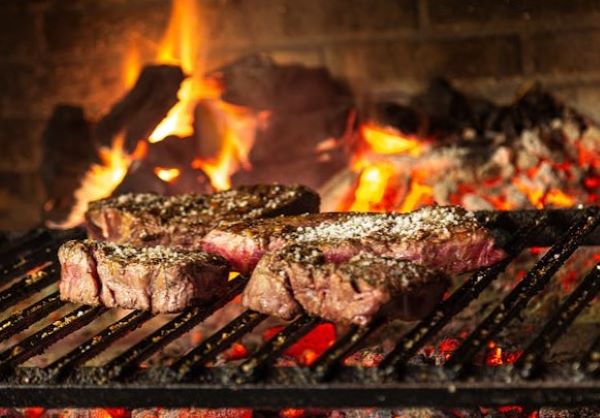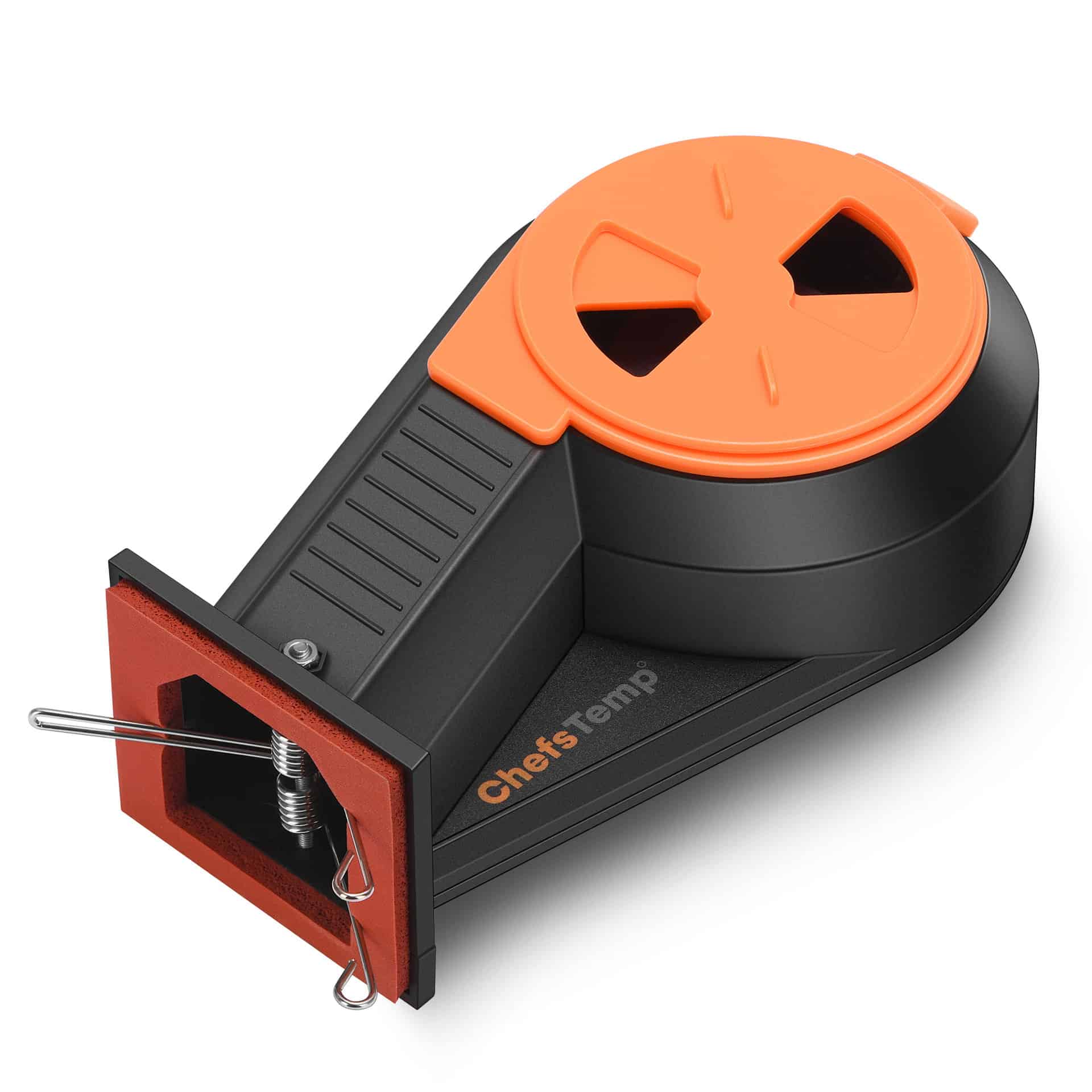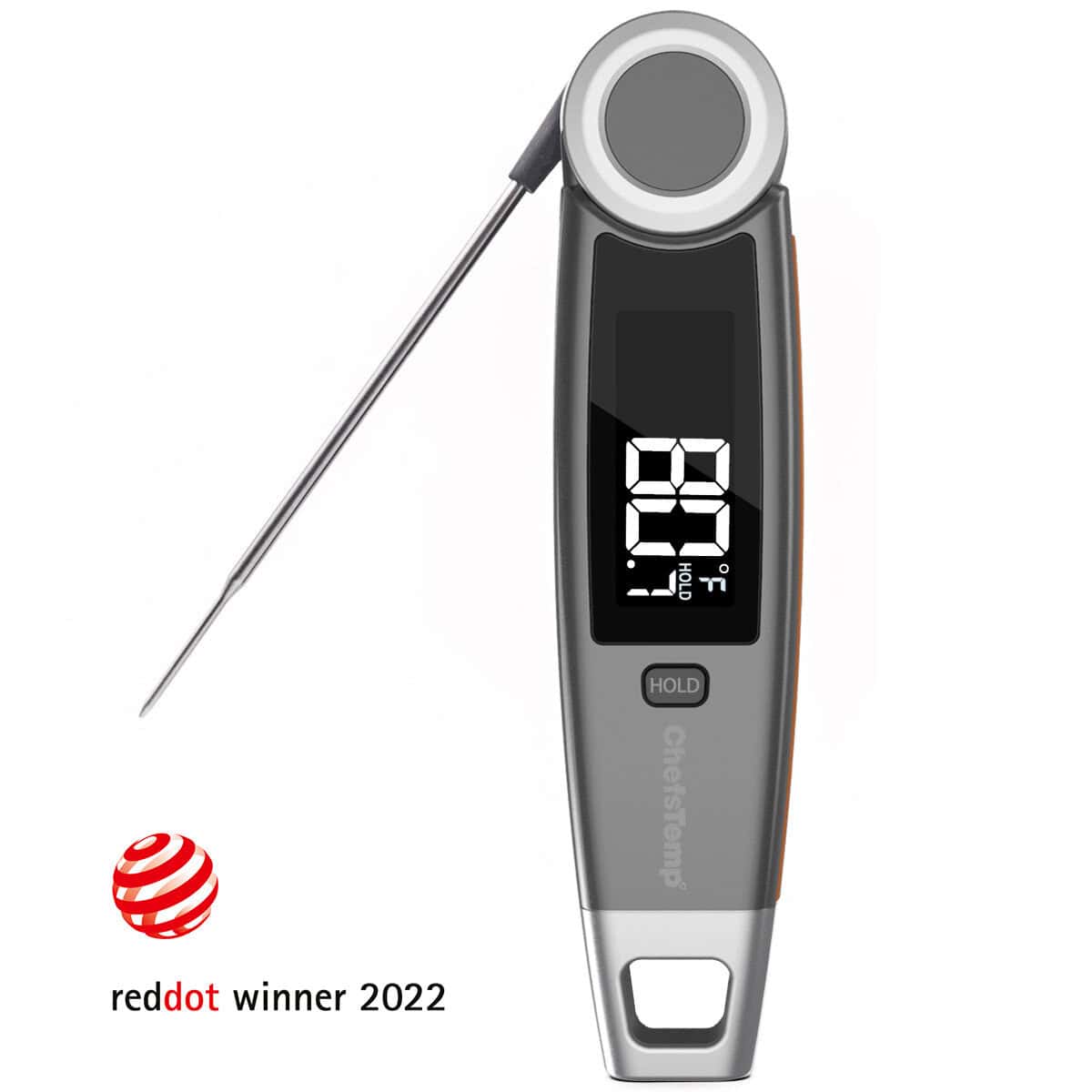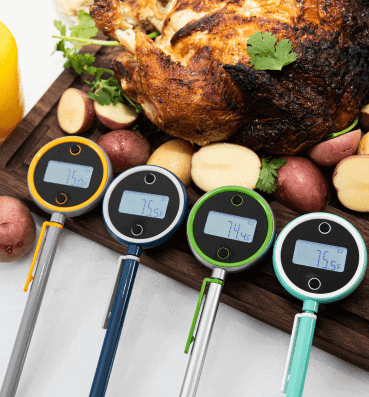
Unlocking Flavor: How Food Thermometers Help You Achieve Restaurant-Quality Results
Are you wondering what makes food taste better in restaurants than when you buy it and cook it at home? The temperature plays a vital role in this regard, and is essential not only for the food to be safe. Learn the art of mastering the temperature control of food to achieve restaurant-quality results and enjoy a more flavorful meal.
Table of Contents
Impact of Temperature on Food Texture and Taste
Although it is called a culinary art, cooking is a science. Think about this the next time you step into a kitchen.
It explains why a food thermometer is one of the most essential tools in every home kitchen. Using one ensures that food is cooked thoroughly and reaches the desired temperature. Heat affects the quality of food in two ways: it alters the texture and taste.
How Temperature Affects the Flavour/Taste
Before discussing how heat affects food temperature and flavour, it is essential to understand the physiology of human taste. The human taste buds consist of little pink bumps on the tongue. These bumps have cells that are bunched together and can detect taste. Each taste cell has pores that can hold and sense taste molecules from food that your saliva breaks down. Upon detecting those taste molecules, the taste cells transmit signals to various parts of the brain, which impacts your perception of the food.
Temperature significantly affects the perception of the taste cells. In particular, hot foods contribute to a more intense and complex flavour profile than cold foods do. Heat increases the solubility of flavour compounds. As a result, the stimulation of the taste buds and the signal receptors is increased. However, be extra wary of overheating the food, as it can trigger chemical reactions that alter its flavour profile or destroy valuable flavour compounds.
Hence, cooking food at the ideal temperature is essential for achieving the most desirable flavour in hot foods.

How Temperature Affects the Texture
Aside from flavour, texture is another factor that impacts the overall experience with food. It is crucial to achieve restaurant-quality food because texture is directly related to how tender, crunchy, or chewy the food is. Depending on the specific food type, there is a particular texture that suits it.
Cooking food to a specific temperature is vital for altering its physical state and structure, depending on how heat interacts with the fat, protein, fibre, or starch present in a particular food group. For example, heating cheese causes the protein to break down as it melts, resulting in a stretchy, soft texture. Reactions to heat vary across different food groups and food preparation methods.
Another good example of the texture’s impact on flavour is the Maillard reaction, also known as the browning reaction. The browning effect is one way heat can affect food and its texture. When food is cooked at high temperatures, the exterior browns, giving it a crispy texture when you first bite into it. It creates a sensory experience that enhances the overall experience of that food.
The browning effect results from a reaction between proteins and the reduction of sugar when exposed to heat. This process produces thousands of flavour compounds, making the food richer in aroma and taste. This effect applies to grilled meat or bread, aiming for a golden-brown, slightly crispy exterior.
Another example of how food temperature affects texture is gelatinisation. This refers to the transformation of starch in food when heated in water, as happens when you cook pasta or noodles. The heat causes the starch to swell and become hydrated as it absorbs the water, thus increasing in size. The pasta also softens, making it more palatable and easier to consume.
Exposing different foods to heat triggers a series of chemical reactions that affect texture. And since texture plays a crucial role in the overall food experience, mastering temperature control with thermometers makes it possible to create dishes as good as those you’re served in a restaurant.

Measuring and Controlling Temperature for Better Food Quality
Investing in a food thermometer is a tip you might hear often if you’re looking to up your culinary game. Indeed, knowing how to measure and control temperature is the secret to enjoying better quality food at home.
Temperature control and monitoring are vital for food safety – that’s a fact. But it is also integral in improving food quality, which is why many tools are available to adjust and monitor food temperature as it cooks.
Nowadays, there are all kinds of thermometers you can use with different types of food and cooking methods. For example, there are smart BBQ thermometers for grilling, and thermometers you can safely put in the oven to monitor temperature changes for more accurate baking results. Advanced technologies in thermometers have enabled amateur cooks to overcome common cooking challenges, such as uneven cooking and temperature fluctuations.
How Do Thermometers Contribute to Preserving and Improving Flavour?
In the field of culinary arts, Certain recipes will indicate the temperature at which to cook your food, such as the temperature of the oil for frying or the best temperature to bake at. It is crucial to adhere to these tips because they’re essential for food safety and optimal taste.
There are a variety of thermometers to provide precise measurements in various cooking techniques. Like instant-read thermometers, they can be excellent for quickly checking the temperature of cookware or thin slices of meat. However, probe thermometers work well for measuring the temperature inside casseroles, meats, and other dishes. The probe can be inserted into the thickest part of the meat to achieve the best internal temperature.
For optimal flavour, properly calibrate the thermometer for reliable readings and maintain food quality. Experts recommend calibrating your thermometer regularly, or after every use. Various calibration methods are available; choose the one that works best for you. With these practices and reliable tools, home cooks can prepare food that is safe to eat while maintaining their desired flavour and texture.
Discover Other ChefsTemp Products
Discover more recipes and learn kitchen tricks by joining our cooking family on Facebook.
You may also like:


















